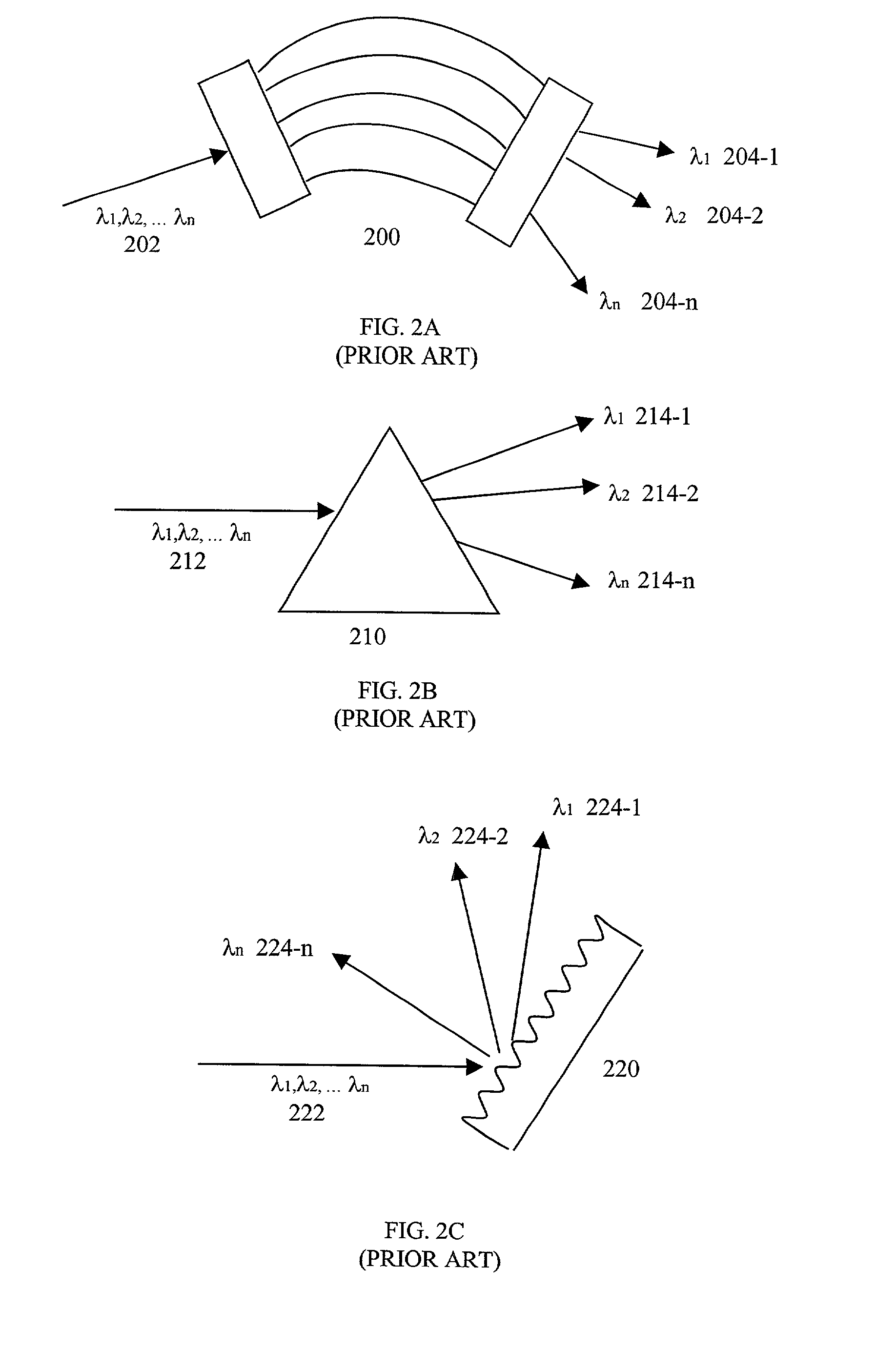Spectrum division multiplexing for high channel count optical networks
a technology of optical networks and spectrum division, applied in the field of optical communication, can solve the problems of many filtering components and modules, adding and/or dropping a group of signal channels,
- Summary
- Abstract
- Description
- Claims
- Application Information
AI Technical Summary
Problems solved by technology
Method used
Image
Examples
embodiment 1000
[0089] In a present interleaver embodiment 1000, the ring resonators 1012, 1014 provide a periodic wavelength-dependent phase shift that can be expressed in accordance with the following equation. 1 = arctan ( r 2 - 1 ) sin 2 r - ( 1 + r 2 ) cos ( 1 )
[0090] with 2 = 2 L 0 ( 2 )
[0091] and
r.sup.2=R (3)
[0092] where L.sub.0 is the optical path length of the ring, .lambda. is the wavelength of the light in air, and R is the coupling coefficient of the coupler between one respective arm 1008 or 1010 of the Mach-Zhender 1002 and a corresponding respective ring resonator 1012, 1014. The phase shift imparted by a respective ring resonator can be adjusted by changing L.sub.0.
[0093] The sharpness of the filter effect of the interleaver 1000, i.e., the slopes of the transmission curve on two sides of a pass band can be determined by the reflectivity of the respective ring resonators 1012, 1014. The quality of the OSS 1000, as measured in terms of closeness of the first and second output beam sp...
embodiment 1100
[0113] Referring now to the illustrative drawing of FIG. 14, there is shown a generalized block diagram of a spectrum exchanger 1400 which may be implemented in accordance with the invention. In operation, an input optical signal IN 1 with a first wavelength spectrum is provided to input 1402, and an input optical signal IN 2 with a second wavelength spectrum is provided to input 1404. The spectrum exchanger 1400 provides an output optical signal OUT 1 that that has the first wavelength to output 1406. The spectrum exchanger 1400 provides an output optical signal that has the second wavelength spectrum to output 1408. The spectrum exchanger 1400 may be constructed using any of the embodiments described with reference to FIGS. 9A-13, for example. For instance, assuming that FIG. 11 is used to implement the spectrum exchanger 1400, the first, second and third phase shifts imparted by such interleaver 1100 would be selected such that the input optical signal 1120 would be provided as t...
PUM
 Login to View More
Login to View More Abstract
Description
Claims
Application Information
 Login to View More
Login to View More - R&D
- Intellectual Property
- Life Sciences
- Materials
- Tech Scout
- Unparalleled Data Quality
- Higher Quality Content
- 60% Fewer Hallucinations
Browse by: Latest US Patents, China's latest patents, Technical Efficacy Thesaurus, Application Domain, Technology Topic, Popular Technical Reports.
© 2025 PatSnap. All rights reserved.Legal|Privacy policy|Modern Slavery Act Transparency Statement|Sitemap|About US| Contact US: help@patsnap.com



